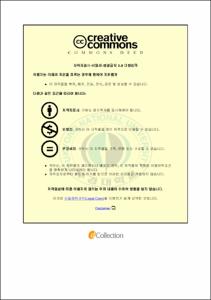동형의 한중 한자어 형용사 대비 연구
- Alternative Title
- A Contrastive Study on The Adjectives of The Same Forms Between Korean Chinese Characters an Chinese
- Abstract
- In the Korean vocabulary there are a lot of words written with Chinese characters and so does the adjectives. There are nearly 80% Chinese characters in the edited by The National Institute of the Korean Language in 2005years. This phenomenon has aroused a lot of attention of scholars. Up to now, studies on the Chinese characters of the Korean Language have reached a considerable degree both in quantity and quality. Little research is related to the adjectives of the Chinese characters and only several papers comparatively analyze these from the Chinese characters word form, meaning, and categories as well as other aspects. So I, as a international student who is learning Korean, in the aim to help international students, especially Chinese students willing to learn Korean. Comparing the Chinese characters in the same forms of Chinese adjectives with the adjectives in modern Chinese from a new perspective.
Before the formal analysis, chapter 2 introduces the definitions of the adjectives and the Chinese characters in Korean and the definitions of adjectives in Chinese by summarizing the former research and making a simple comparison between the adjectives of the Chinese characters and the adjectives of the Korean native word, finding the difference and the common points between them.
Chapter 3 analyzes the form of the Korean Chinese characters that are the same in forms of the Chinese adjectives. Even with the same form of the Chinese adjectives, there exists fundamental differences between the Korean Chinese character adjectives and the Chinese adjectives because of the derivational suffixes. The adjectives from the that are the same in the form of the Chinese adjectives are divided into 3 categories by the independence and the words' number. Chapter 3 explains the meaning of the derivational suffixes, compares '-hada', '-seureobda', '-lobda' forms, which are the most common vocabulary, sorts out the characteristics of the three suffixes and finds out the difference and the common points between them.
Chapter 4 continues to analyze the unsolved problems in chapter 3 and divides the root word of the adjectives into three categories by the action ,the state and the psychology, to find out the formation rules in choosing suffixes. Because the Chinese characters in Korean and Chinese have the same origin, analyze the root word from the that are in the same form as the Chinese adjectives, find out the influence of the root word on choosing the derivational suffixes when forming the Korean word. Finally explain the reason why the root word and the Suffixes combine.
Chapter 5 analyzes the meaning and the usage of the adjectives of the Chinese characters. Prior to that, I had explored the reason why the two countries characters are the same in form but different in the meaning. Unlike the usual research, I did not classify the meaning and the forms together. Rather, by consulting the meaning in the dictionary and lots of sample texts, I sorted out all the Chinese character adjectives in the and show the result in the chart form. I analyzed the different situations in using the Chinese character adjectives in Korean and Chinese and based on these studies, I summarized the characteristics of the Chinese character adjectives used both in Korean and Chinese and explained why these characteristics had arose.
The last is the conclusion and the summary and description of the research.
- Issued Date
- 2014
- Awarded Date
- 2014. 2
- Type
- Dissertation
- Publisher
- 부경대학교
- Alternative Author(s)
- sunhairui
- Affiliation
- 대학원
- Department
- 대학원 국어국문학과
- Advisor
- 채영희
- Table Of Contents
- Ⅰ. 서론 1
1.1 문제 제기 및 연구 목적 1
1.2 연구 방법 4
1.3 연구 범위 7
1.4 선행 연구 9
Ⅱ. 한·중 한자어 형용사의 특징과 유형 14
2.1 한자어 및 한·중 형용사의 개념 범위 14
2.2 한국 고유어 형용사와 한자어 형용사 분석 22
2.3 한국 한자어 형용사 유형과 특징 26
Ⅲ. 한·중 동형 한자어 형용사의 형태 층위 분석 30
3.1 한자어 형용사의 파생 특징 31
3.2 한자어 어근과 접미사 파생 1 34
3.3 한자어 어근과 접미사 파생 2 61
Ⅳ. 한·중 한자어 형용사 어근의 특징과 유형 73
4.1 한자어 형용사 어근의 분류 73
4.2 한자어 형용사 어근이 중국어에서 품사 종류와 접미사 선택 관계 88
Ⅴ. 한·중 동형 한자어 형용사의 의미 층위 분석 102
5.1 한·중 동형 한자어 의미 차이 형성 요인 105
5.2 한·중 동형 한자어 형용사의 의미 차이 108
5.3 한국 한자어 형용사 의미 특징 129
Ⅴ. 결론 145
참고 문헌 148
- Degree
- Doctor
- Files in This Item:
-
-
Download
 동형의 한중 한자어 형용사 대비 연구.pdf
기타 데이터 / 1.53 MB / Adobe PDF
동형의 한중 한자어 형용사 대비 연구.pdf
기타 데이터 / 1.53 MB / Adobe PDF
-
Items in Repository are protected by copyright, with all rights reserved, unless otherwise indicated.